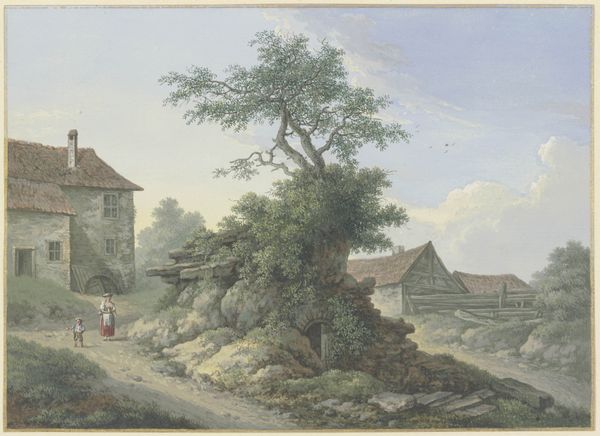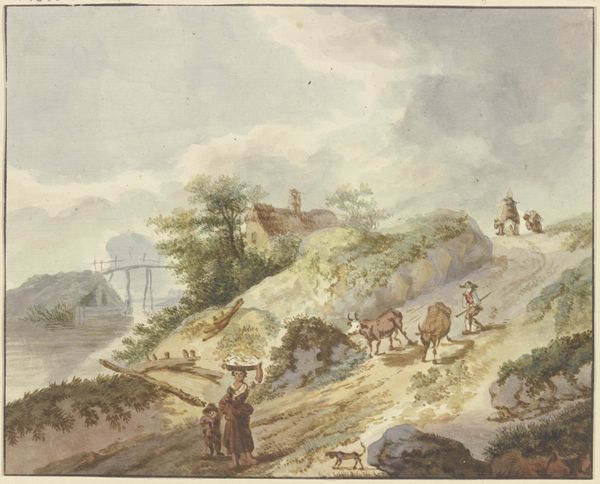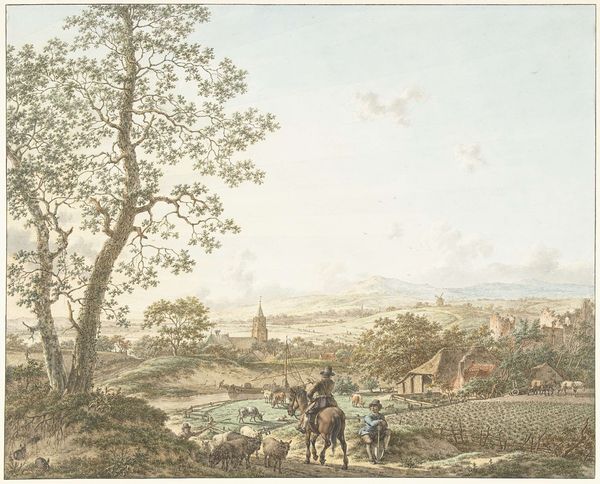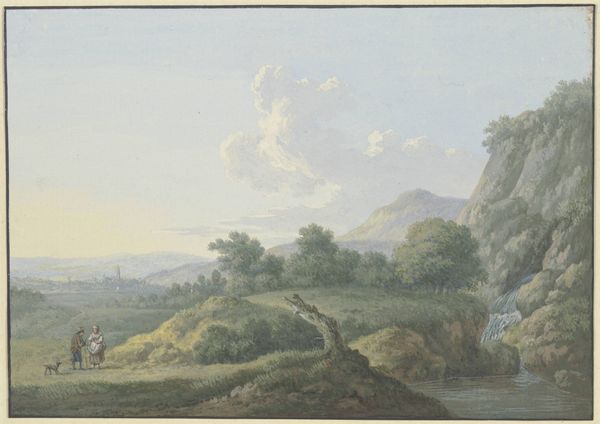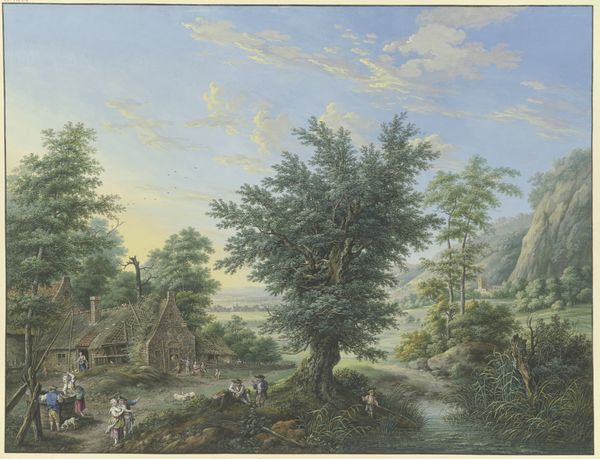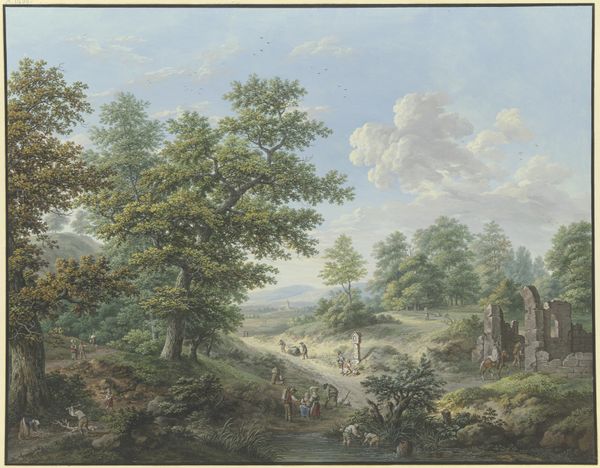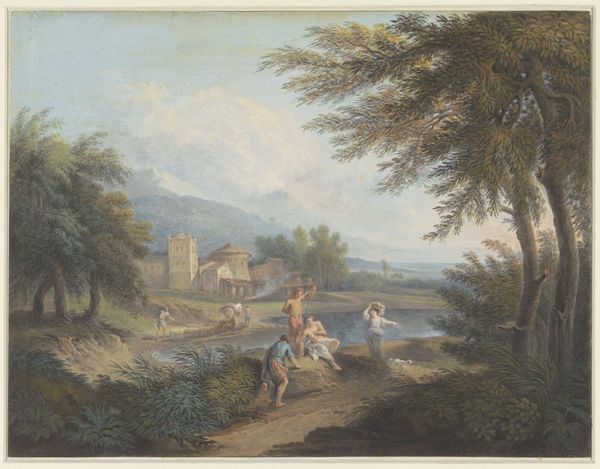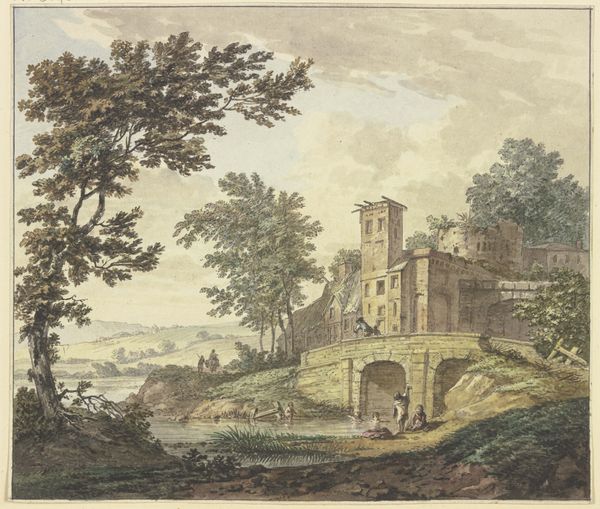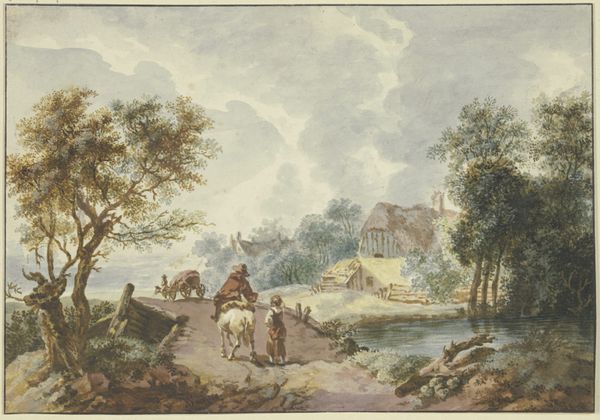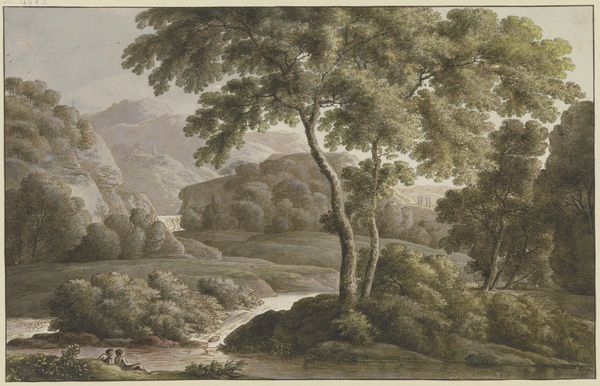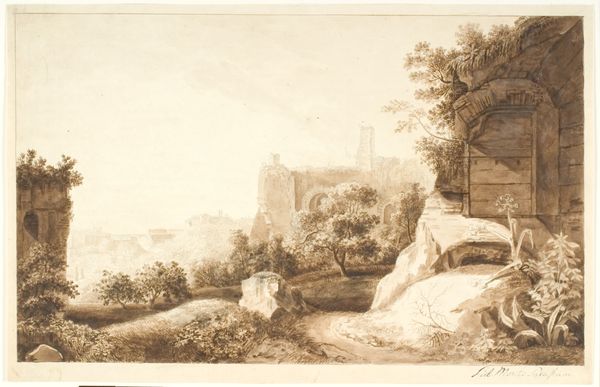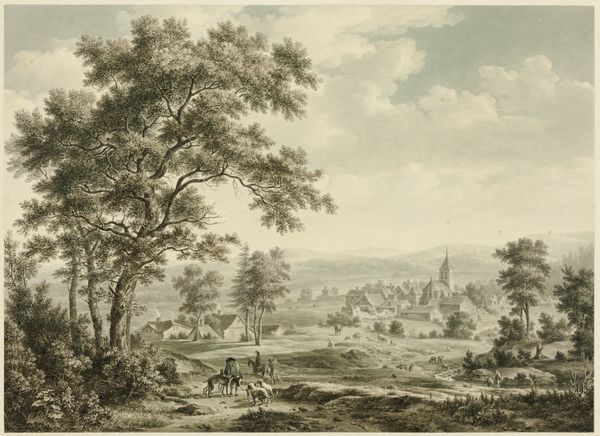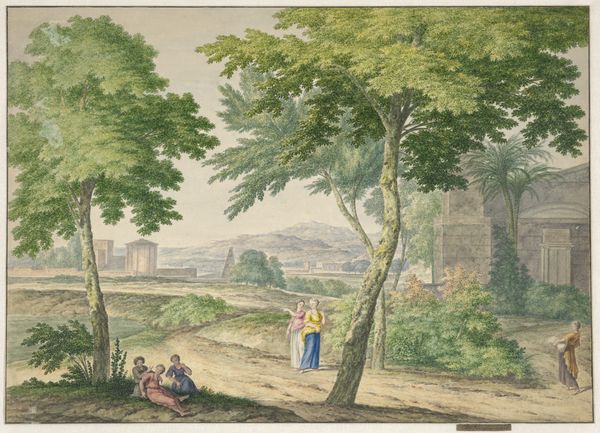
drawing, plein-air, watercolor
#
drawing
#
plein-air
#
landscape
#
figuration
#
watercolor
#
romanticism
#
genre-painting
Dimensions: sheet: 11 7/8 x 15 7/8 in. (30.2 x 40.3 cm)
Copyright: Public Domain
Editor: Johann Friedrich Nagel's "Peasant Family in a Landscape," likely created between 1765 and 1825, is a serene watercolor drawing. It's making me think about Romanticism’s fascination with nature. How can we read its imagery today? Curator: This is a pertinent question! While seemingly idyllic, images like these participated in constructing specific ideas about the rural population and their relationship to the land. How do you see this landscape reinforcing or challenging existing power structures? Editor: I see the peasant family as quite small relative to the landscape, which emphasizes nature's grandeur and perhaps their own insignificance, and makes me wonder whether their conditions of life are really idyllic. Is the artwork showing a true image, or does it follow a romantic ideal? Curator: Exactly. Think about the era – burgeoning industrialization, social unrest, and philosophical debates about nature and humanity. These "genre paintings," as they're sometimes called, are rarely straightforward depictions of reality. Who is commissioning these works, and what socio-political narratives are being promoted through this representation of peasantry? What is omitted or glossed over? Editor: So, it's not just a simple landscape but also a statement about the relationship between different social classes. The picturesque aesthetic might be obscuring underlying tensions. What could those tensions have been in this context? Curator: Consider land ownership, the feudal system, and the emerging capitalist economy. While nature provides sustenance, it can also be a site of exploitation and struggle. How are labor, class, and land ownership reflected or, more likely, masked in this scene? This brings a feminist perspective on how women contributed to the labor, or whether there were children in this scene that should have been working. Editor: This is super insightful. It’s changed my perspective on the image, and made me realize how many hidden social layers we can interpret through a landscape painting. Curator: Precisely. Art offers a critical lens through which we can dissect and understand historical narratives. It is about constant questioning, not just aesthetic appreciation.
Comments
No comments
Be the first to comment and join the conversation on the ultimate creative platform.

